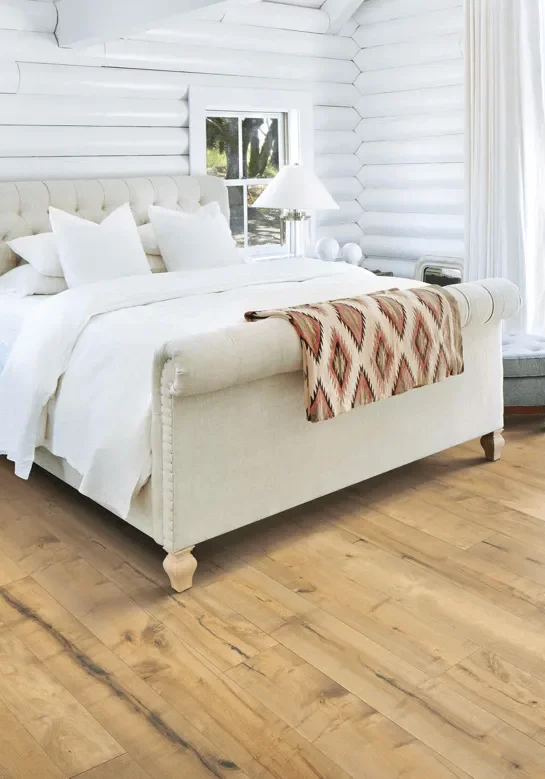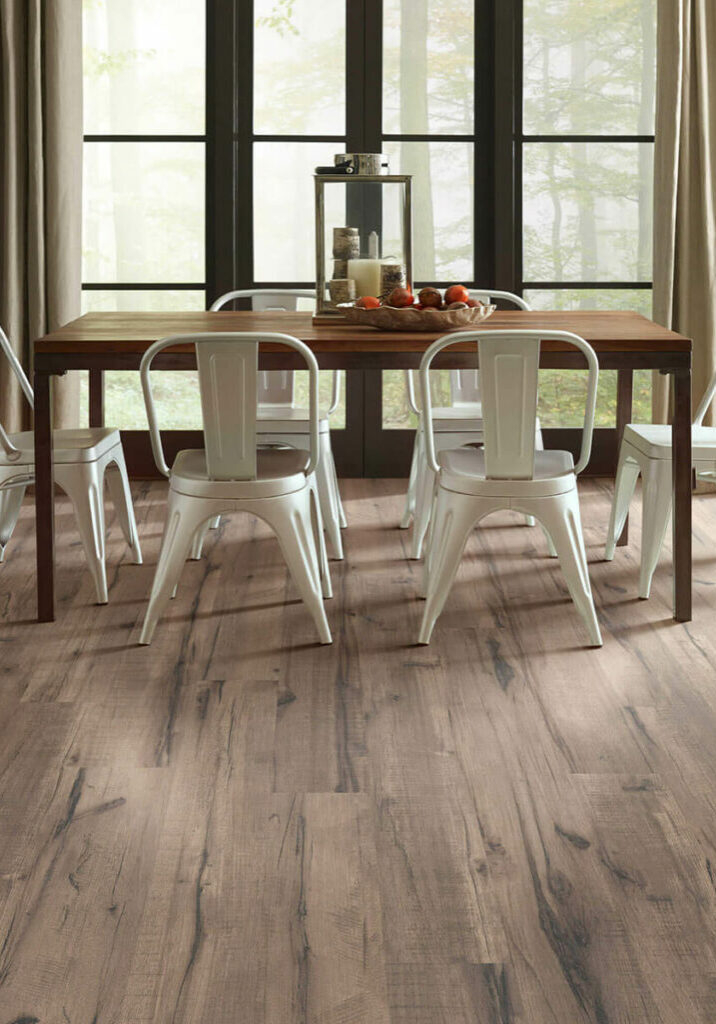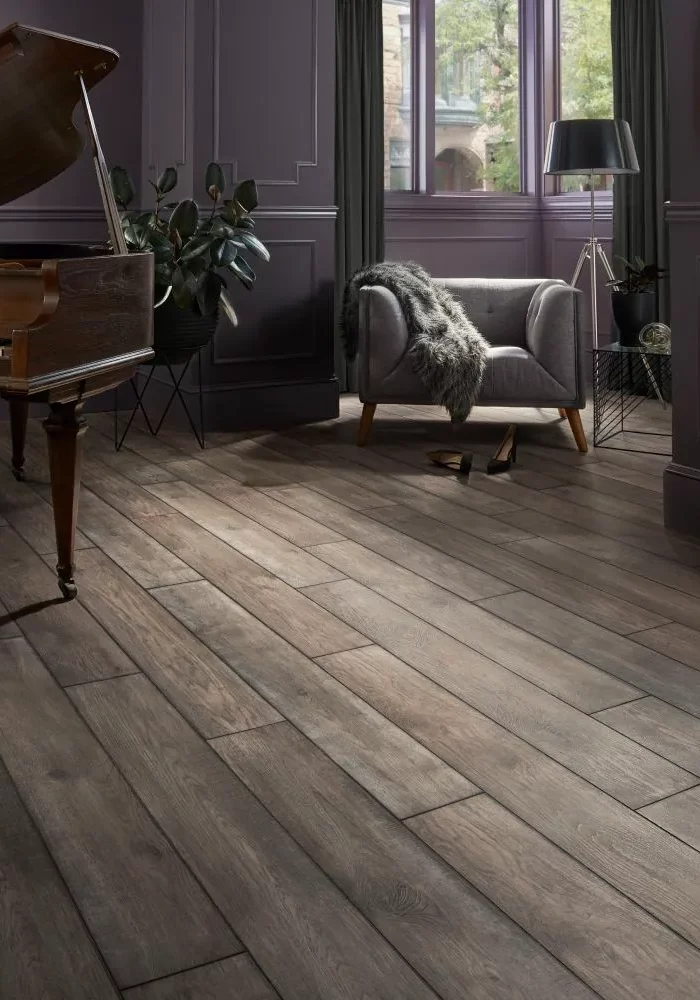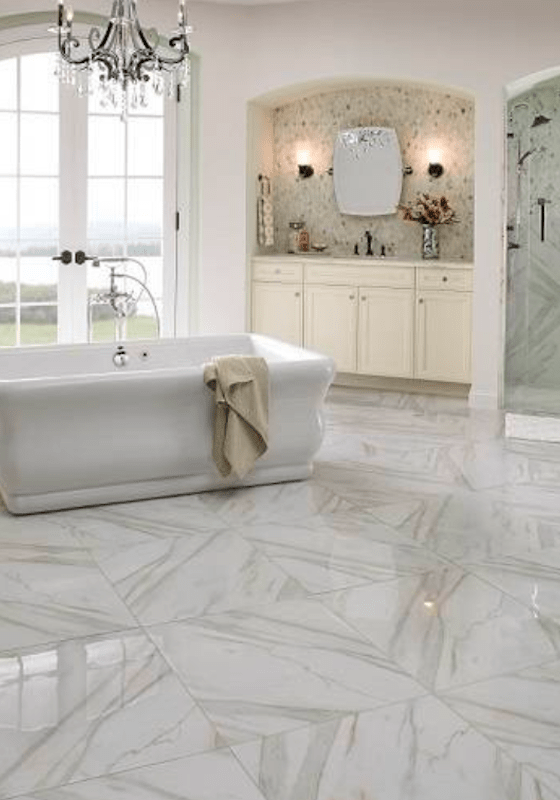Reclaimed Wood Flooring: What it is, Pros and Cons & Costs
What is Reclaimed Wood flooring?

You can use reclaimed wood for a classic look in your residential or commercial premises. Reclaimed wood flooring comes from material that people previously used in a building elsewhere. It has its own unique history. The flooring material is sourced from old barns, industrial warehouses, railroad trestles, and factories. It is stylish and, at the same time, environment-friendly. Most of the wood is old, harvested about 100 to 300 years ago.
Using Reclaimed Wood for Flooring
Reclaiming wood involves turning framing timbers and beams from an old building into flooring materials. Most often, reclaimed hardwood floors are made from wood from other parts of the building, with only a small portion coming from the floor. When the wood is reclaimed, it is put in different grades depending on the characteristics of the wood.
How to Install Reclaimed Wood Flooring
To use reclaimed wood for flooring:
- First, you saw it.
- Then, air-dry the material.
- After that, place the reclaimed wood in a kiln which kills bugs and controls the wood’s moisture levels.
- Lastly, green-saw the material to achieve a uniform look.
You can use reclaimed wood for making different flooring materials, for example, reclaimed wood laminate and engineered wood flooring.
Why Use Reclaimed Wood?
In the USA, wood was abundant in supply in the past. Americans used wood to construct warehouses, barns, and factories, especially during the Industrial Revolution. Most reclaimed wood comes from trees that were harvested in the 1700s and 1800s. The wood comes from slow-growing hardwood tree species that took up to 400 years to grow and mature. The trees grow slowly, are strong and dense. Here are reasons why reclaimed wood is a popular flooring option.
Pros of Reclaimed Wood
1. It is Eco-Friendly
Reclaimed wood is converted from one use to another. By doing so, it saves forest because it meets some of the demand for hardwood flooring materials. More so, there is a little environmental impact because processing reclaimed wood is less demanding than processing new wood. New wood requires felling, sawing, transporting, and processing. Some of the activities are not eco-friendly.
2. Unique Appearance
Old wood has a classic look due to weathering, sawing methods, and age. Therefore, you can add personality to your home or commercial property by using historic wood on your floors. Reclaimed wood is unique because the processing method used is different from modern methods.
You can get unique flooring wood tree species that are not readily available in the flooring industry, like chestnut, American elm, quarter-sawn oak, and heart pine. The trees are rare, and some even extinct. Your home flooring will be unique from the common American homes that use red oak or other common species in the market to furnish floors. Each reclaimed wood has a unique color because different environments have different salt levels—the amount of salt in the air influences the color of the wood.
3. It is Sturdy and Durable
Reclaimed timbers come from virgin growth timber. Virgin growth timber grows slowly, then produces wood with a denser grain. As such, they are usually stable, strong, and durable.
Cons of Reclaimed Wood
1. Unstable prices
The cost of reclaimed wood is not stable and depends on several factors. It also depends on the type of wood and its quality.
2. Labor Intensive process
Reclaiming wood is a laborious and delicate process that adds to the high cost of the material. Although the wood doesn’t go through the standard wood processing techniques, salvaging it takes a long time and requires skill.
3. There is No Standard Quality
Not all reclaimed wood can suit your flooring purpose. For example, reclaimed wood from a tannery is not fit for use because it has toxins. Also, some reclaimed wood is preserved using harmful chemicals like lead. Also, the quality of the wood depends on the uses of the building and the part the wood is reclaimed from. Additionally, the amount of salt in the air influences the color of the wood. As such, when sourcing reclaimed wood, you should exercise caution. It is advisable to buy from reputable dealers who only sell what is usable and grades its reclaimed wood.
Reputable suppliers take reclaimed wood through a process. First, they categorize it depending on the quality of the wood. Secondly, they kiln-dry it to remove bugs and control moisture levels of the wood.
4. Limited Supply
You may also not find all the flooring materials you need from one supplier. Sourcing from different suppliers may result in getting different qualities and species of wood.
How Much Does Reclaimed Wood Flooring Cost?
Most times reclaimed wood is cheaper than new wood. However, there are no standard prices, and some reclaimed wood is more expensive than regular flooring materials. In this regard, the reclaimed wood prices vary depending on the manufacturer and the type of wood. This is because the market for reclaimed wood is volatile and characterized by fluctuating prices because of unpredictable supply sources. The salvaging process is also laborious.
Wrapping Up
Reclaimed wood works well, especially for renovating old homes. If you find a reputable supplier and the price of the reclaimed wood is within your budget, it is worth the buy.








